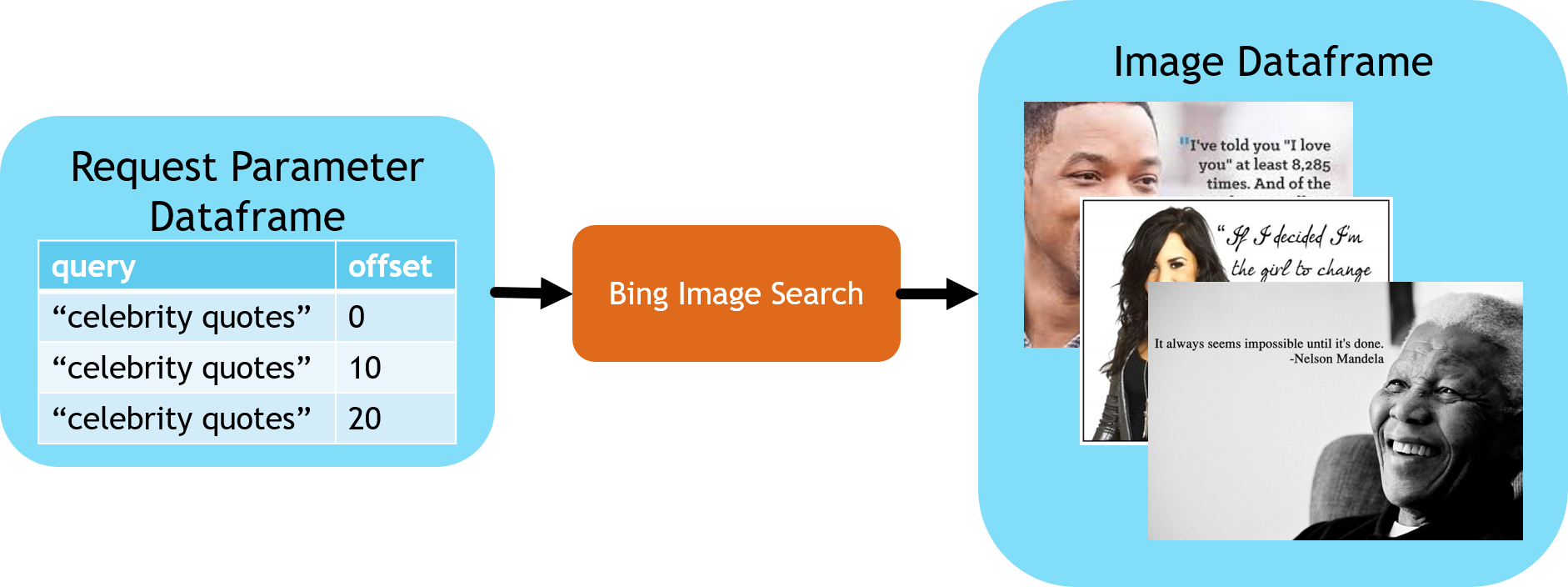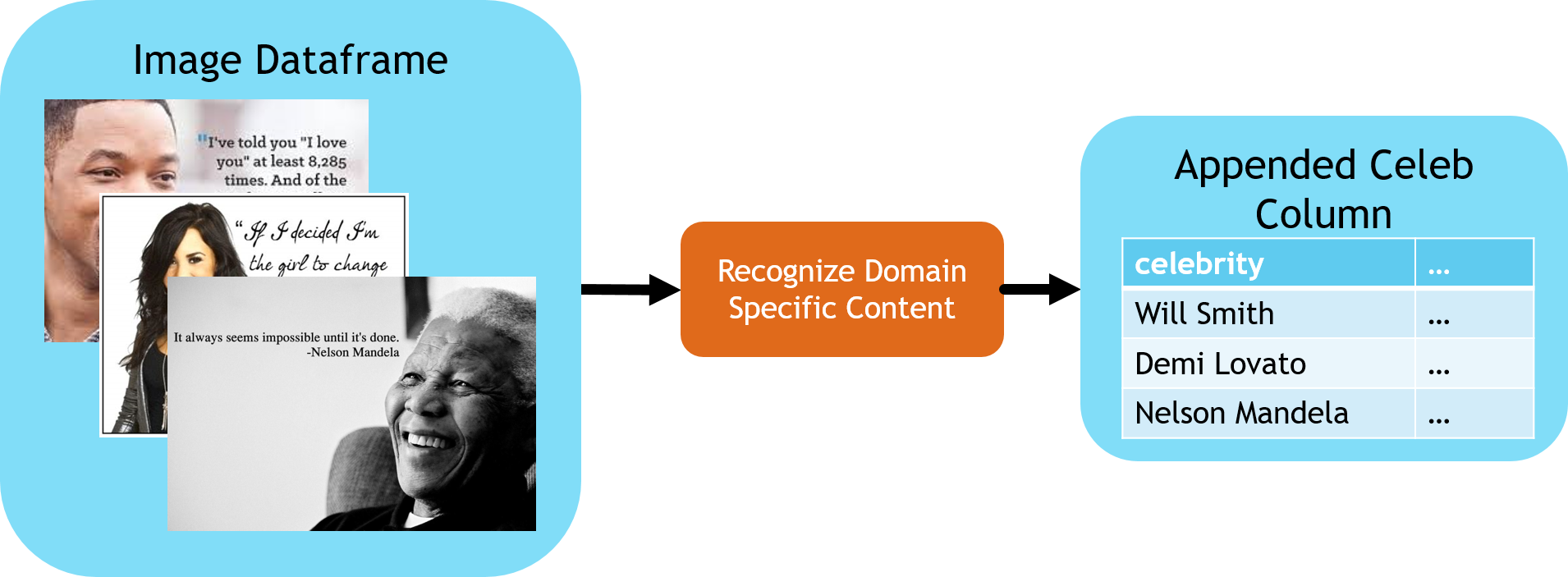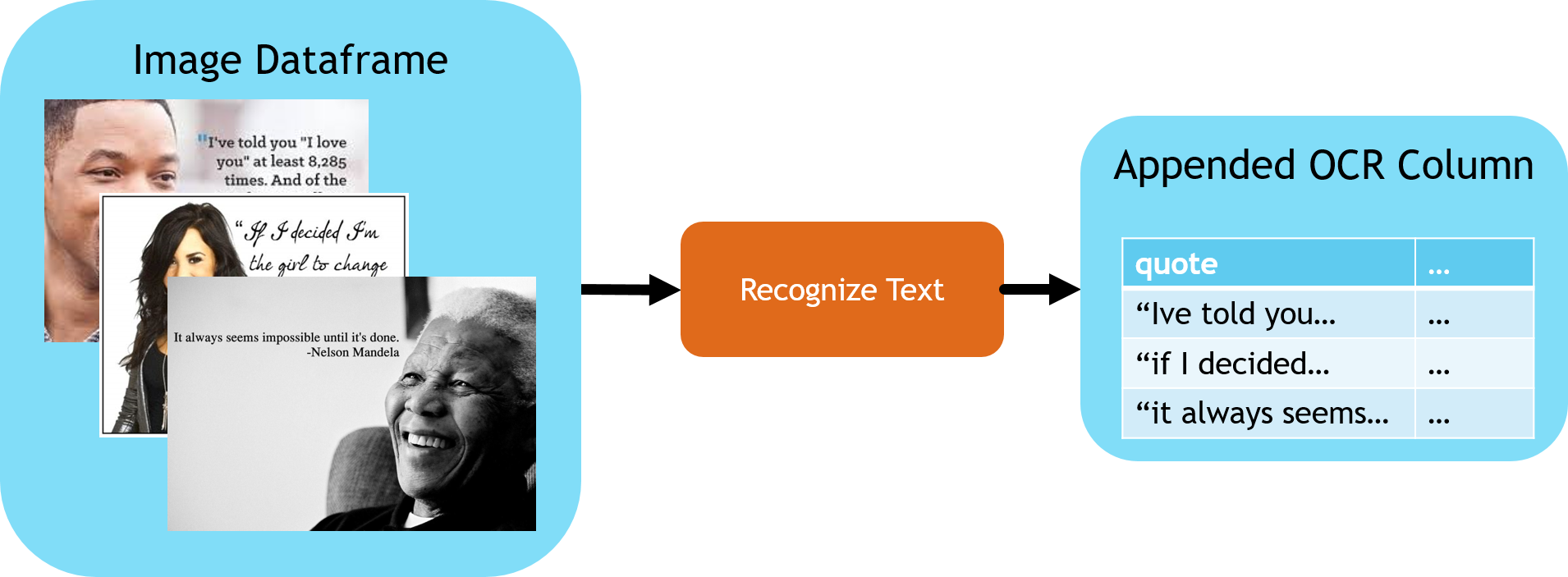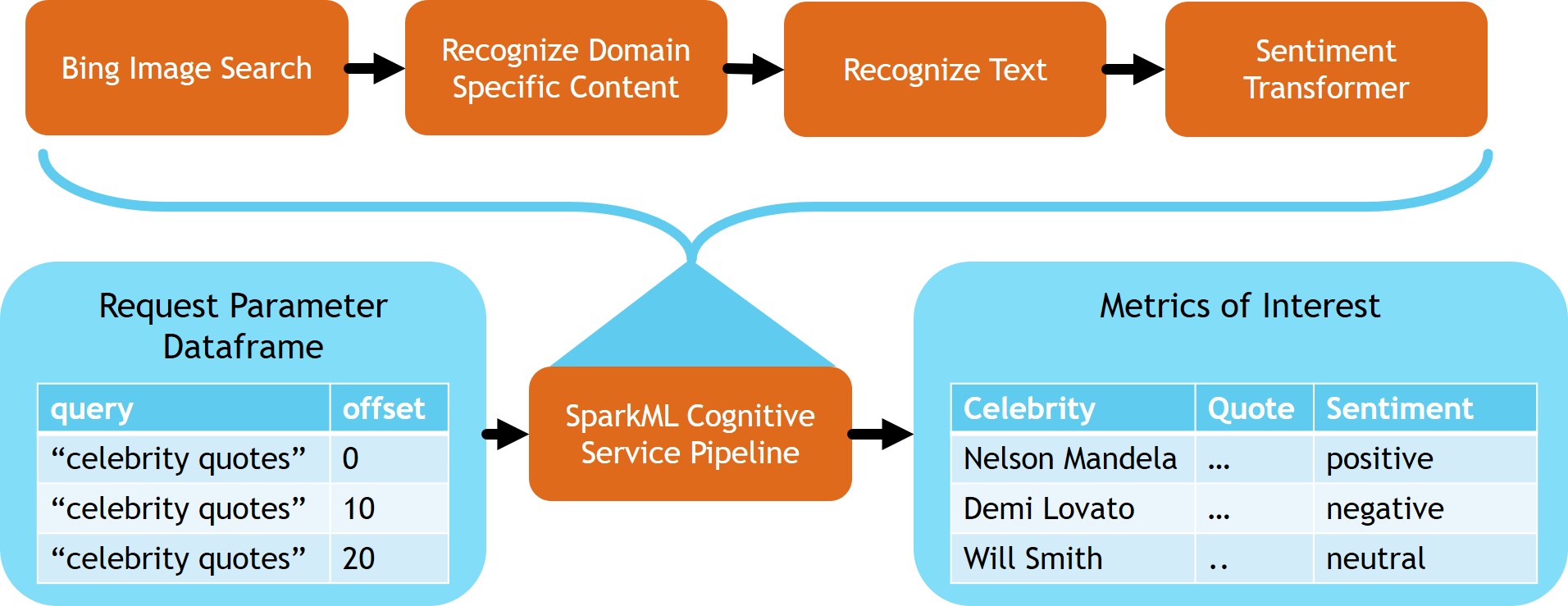| title | hide_title | status |
|---|---|---|
Quickstart - Analyze Celebrity Quotes |
true |
stable |
from synapse.ml.services import *
from pyspark.ml import PipelineModel
from pyspark.sql.functions import col, udf
from pyspark.ml.feature import SQLTransformer
from synapse.ml.core.platform import find_secret
# put your service keys here
ai_service_key = find_secret(
secret_name="ai-services-api-key", keyvault="mmlspark-build-keys"
)
ai_service_location = "eastus"
bing_search_key = find_secret(
secret_name="bing-search-key", keyvault="mmlspark-build-keys"
)Here we define two Transformers to extract celebrity quote images.
imgsPerBatch = 10 # the number of images Bing will return for each query
offsets = [
(i * imgsPerBatch,) for i in range(100)
] # A list of offsets, used to page into the search results
bingParameters = spark.createDataFrame(offsets, ["offset"])
bingSearch = (
BingImageSearch()
.setSubscriptionKey(bing_search_key)
.setOffsetCol("offset")
.setQuery("celebrity quotes")
.setCount(imgsPerBatch)
.setOutputCol("images")
)
# Transformer to that extracts and flattens the richly structured output of Bing Image Search into a simple URL column
getUrls = BingImageSearch.getUrlTransformer("images", "url")This block identifies the name of the celebrities for each of the images returned by the Bing Image Search.
celebs = (
RecognizeDomainSpecificContent()
.setSubscriptionKey(ai_service_key)
.setLocation(ai_service_location)
.setModel("celebrities")
.setImageUrlCol("url")
.setOutputCol("celebs")
)
# Extract the first celebrity we see from the structured response
firstCeleb = SQLTransformer(
statement="SELECT *, celebs.result.celebrities[0].name as firstCeleb FROM __THIS__"
)This stage performs OCR on the images to recognize the quotes.
from synapse.ml.stages import UDFTransformer
recognizeText = (
RecognizeText()
.setSubscriptionKey(ai_service_key)
.setLocation(ai_service_location)
.setImageUrlCol("url")
.setMode("Printed")
.setOutputCol("ocr")
.setConcurrency(5)
)
def getTextFunction(ocrRow):
if ocrRow is None:
return None
return "\n".join([line.text for line in ocrRow.recognitionResult.lines])
# this transformer wil extract a simpler string from the structured output of recognize text
getText = (
UDFTransformer()
.setUDF(udf(getTextFunction))
.setInputCol("ocr")
.setOutputCol("text")
)sentimentTransformer = (
TextSentiment()
.setLocation(ai_service_location)
.setSubscriptionKey(ai_service_key)
.setTextCol("text")
.setOutputCol("sentiment")
)
# Extract the sentiment score from the API response body
getSentiment = SQLTransformer(
statement="SELECT *, sentiment.document.sentiment as sentimentLabel FROM __THIS__"
)Now that we have built the stages of our pipeline it's time to chain them together into a single model that can be used to process batches of incoming data
from synapse.ml.stages import SelectColumns
# Select the final coulmns
cleanupColumns = SelectColumns().setCols(
["url", "firstCeleb", "text", "sentimentLabel"]
)
celebrityQuoteAnalysis = PipelineModel(
stages=[
bingSearch,
getUrls,
celebs,
firstCeleb,
recognizeText,
getText,
sentimentTransformer,
getSentiment,
cleanupColumns,
]
)
celebrityQuoteAnalysis.transform(bingParameters).show(5)




